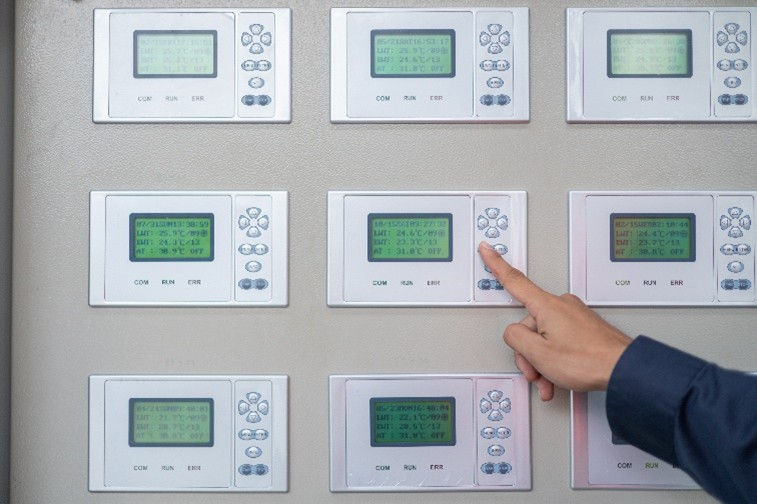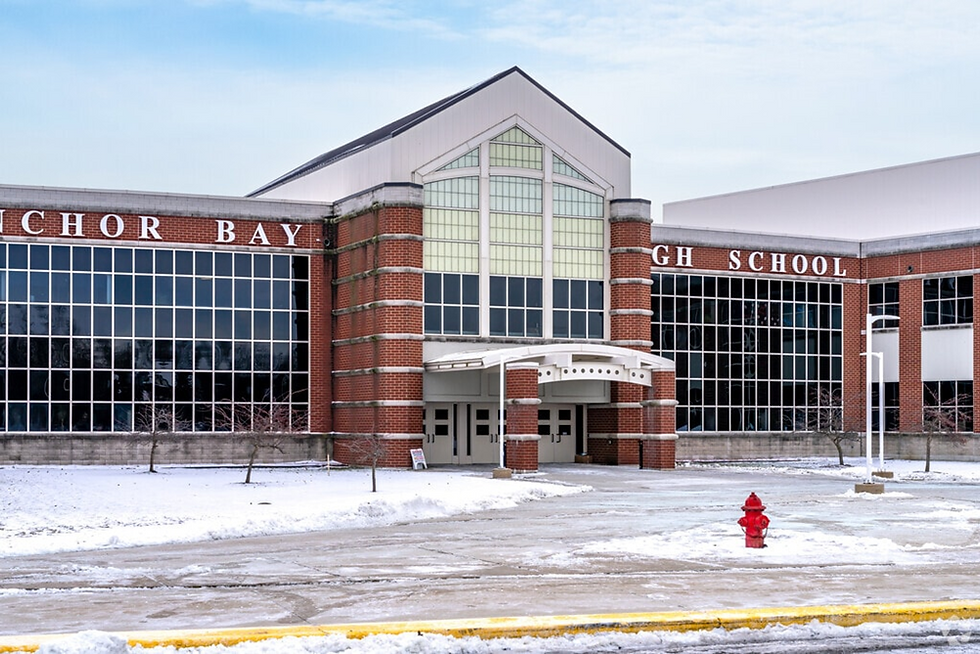The Academic Energy Envelope
- Jyothi Puli

- Sep 17
- 5 min read
Updated: Sep 24
How Schools are a great candidate to look into energy savings now more than before
What are environmental factors that are pushing schools to consider energy efficiency
Current administration and challenges that schools need to consider and prioritze
Most schools have BMS then whey ecoSEMS Potential Savings and Return on Investment
Long term benefits.
The Next Lesson:
Energy Efficiency Meets AI
In education, every lesson matters. Now may be the time to make the most important one yet embracing energy efficiency powered by patented AI. The future of schools depends on proactive, smart choices. Let’s explore what’s ahead and how to prepare today, rather than react tomorrow.
A Perfect Storm of Pressures
Schools today face mounting environmental, financial, and operational pressures that make energy efficiency a strategic priority. Rising utility rates, tighter budgets, growing sustainability mandates, and increasing community expectations are all converging at once. Administrators are expected to do more with less—while creating healthier, more resilient learning environments for students and staff.
Environmental Factors Driving the Change
Climate Commitments:
States and districts are pledging carbon neutrality and sustainability goals. Schools are under pressure to demonstrate leadership.
Rising Utility Costs:
Electricity costs have surged, especially in environmentally conditioned spaces such as classrooms, labs, and athletic facilities.
Community and Student Advocacy:
Parents, students, and staff are demanding green campuses and sustainable practices.
Current Administration Challenges
• School leadership must balance multiple priorities:
• Tight operating budgets and aging infrastructure.
• Maintaining safe and comfortable learning environments despite staff shortages.
• Pressure to modernize facilities and meet environmental benchmarks.
• Maximizing every dollar to protect both programs and people.
• These challenges make energy savings not just optional, but essential.
Why ecoSEMS if Schools Already Have a BMS?

Most schools already operate with a Building Management System (BMS). However, traditional BMS platforms:
Focus only on control and scheduling, not intelligent optimization.
Lack AI-driven insights that adapt in real-time to actual building conditions, weather, and usage.
Require manual oversight from facilities staff who are often already stretched thin.
ecoSEMS goes further. It’s not just another control system, it’s an AI-driven, patented platform that integrates with existing BMS infrastructure to:
Identify inefficiencies that human operators or legacy systems miss.
Optimize energy usage dynamically across HVAC, lighting, and more.
Provide real-time reporting to both facilities and leadership, tying savings directly to financial and environmental goals.
Energy Rate - Demand Risks for Schools & Universities
General trends in Michigan indicate electricity delivery, transmission, and rate‑structure components are rising. Schools consume large amounts of HVAC and lighting, often with large loads during peak outdoor temperatures and in cold months. Unpredictable weather patterns make both heating/cooling loads less stable and rising fuel and electricity supply costs are passed through to schools. These risks translate into budget volatility, inability to predict long‑term utilities expenses, and less confidence in investments without good modelling.
Case Study: Anchor Bay High School
[AI-Driven Energy Efficiency for Education and Beyond]

Background
Anchor Bay High School (ABHS), located in Fair Haven, Michigan, is the largest facility in the Anchor Bay School District. Since its opening in 2003, ABHS has grown into a four-year secondary school serving nearly 1,800 students. Its main building spans 412,500 sq.ft, making it one of the largest educational facilities in the region.
Like many large-scale institutions, whether schools, universities, or government complexes ABHS faces the challenge of managing substantial energy demands. The facility consumes 4.5 GWh of electricity annually, resulting in an energy bill of nearly $450,000 per year. Its peak demand reaches 1,356 kW in summer months, reflecting heavy reliance on its 780-ton cooling capacity to maintain comfort during periods of high heat.
Anchor Bay School District has already made strides in building upgrades: temperature control system upgrades, LED lighting retrofits, enhancements to HVAC controls, and bond-funded infrastructure improvements. However, escalating electricity rates, increasing demand, budget constraints, and the need for resiliency call for more sophisticated energy management capability.
These realities created an urgent need for a smarter, future-ready solution
An advanced platform such as ecoSEMS can complement existing Building Management System (BMS) infrastructure by providing actionable analytics, real‑time optimizations, demand response, and cost control. Yielding savings, improving comfort, extending equipment life, and reducing risk.
Objectives
Anchor Bay partnered with Ecojiva and its patented ecoSEMS™ AI-driven energy management platform to pursue a transformative energy strategy with the following goals:
Reduce annual energy expenditures
Provide centralized visibility and control over building-wide energy usage
Optimize HVAC operations to align with occupancy and comfort goals
Advance sustainability leadership within the district and broader community
The Solution
To meet these objectives, Ecojiva implemented a comprehensive solution combining on-site renewable energy with advanced AI energy optimization:
1. 1.2 MW Roof-Mounted Solar PV System
Directly offsets grid electricity consumption
Reduces carbon emissions and energy costs
2. ecoSEMS™ Energy Management Platform
AI-driven system overlaying the existing BMS
Provides real-time insights, predictive optimization, and demand management
3. O&M and Services Agreement
Ensures system reliability and ongoing savings validation
Protects long-term investment with professional monitoring and reporting
ed list of every AHU/RTU, model, capacity (tons), chillers, boilers, pumps, VAVs, etc
That gave us a means to conduct investment-grade audit from these gathers measured loads.
Key Performance Indicators (KPIs)
KPI | Target | Results/Expectations |
Energy Cost Reduction | 25.04% reduction in year 1 | ~$112,000 annual savings |
Peak Demand Reduction | 18.03% within first year | Avoid costly demand charges |
Energy Use Intensity (EUI) | Lower vs. baseline | Efficiency per sq.ft/student improved |
Occupancy & Scheduling Compliance | >95% by year 2 | Smarter HVAC & lighting alignment |
Carbon Footprint | Annual CO₂ reductions | Year-over-year reporting to district |
Comfort & Learning Environment | ≥90% compliance | Temperature maintained within 4℉ (occ.) / 8℉ (unocc.) |
User Engagement | Monthly dashboards, quarterly board updates | Transparency for leadership |
ROI / Payback | Savings tracked vs. investment | Payback within 4–5 years |
Outcomes and Impact
Anchor Bay partnered with Ecojiva and its patented ecoSEMS™ AI-driven energy management platform to pursue a transformative energy strategy with the following goals:
· Over $100,000 in verified first-year energy cost savings
· Significant reduction in carbon footprint, reinforcing district-wide sustainability goals
· Improved comfort for students and staff, supporting the learning environment
· Real-time visibility for administrators, with clear reporting to the school board and community
· Scalable model that can be applied across other schools, universities, and government facilities
Why it Matters Beyond Schools
Anchor Bay’s story illustrates a challenge faced by all large public and institutional facilities: high operating costs, aging systems, and increasing pressure to be sustainable. The combination of ecoSEMS™ + on-site renewable energy demonstrates that with smart technology, institutions can:
· Cut costs without compromising comfort
· Show leadership in sustainability
· Build resilience against rising utility rates
· Inspire their communities by leading with innovation
CONCLUSION

If schools exist to teach students how to prepare for the future, shouldn’t their facilities do the same? With ecoSEMS™, organizations move from reactive energy management to proactive, AI-driven optimization.
Anchor Bay chose to lead. The question is: will your university, government facility, or institution be ready to do the same before rising costs make the choice for you?
👉 If teaching the younger generation is about progressing forward, why wouldn’t we as leaders adopt the new trend that sets the standard?
With ecoSEMS, schools can show and tell by teaching sustainability in the classroom and living it in the building.
The Bottom Line
Schools are under increasing pressure to be leaner, greener, and smarter. ecoSEMS offers an AI-driven solution that complements existing BMS systems, generates immediate and measurable ROI, and ensures long-term resilience.
We look forward to showing you how this small solution can make a big impact.
Thank you for taking the time to explore what ecoSEMS can do for your facilities.
Download a readable PDF here ->

M.S. in Computer Science and EngineeringAI Researcher |
Energy Modeler Passionate about sustainable tech,
intelligent systems, and data-driven innovation




Comments